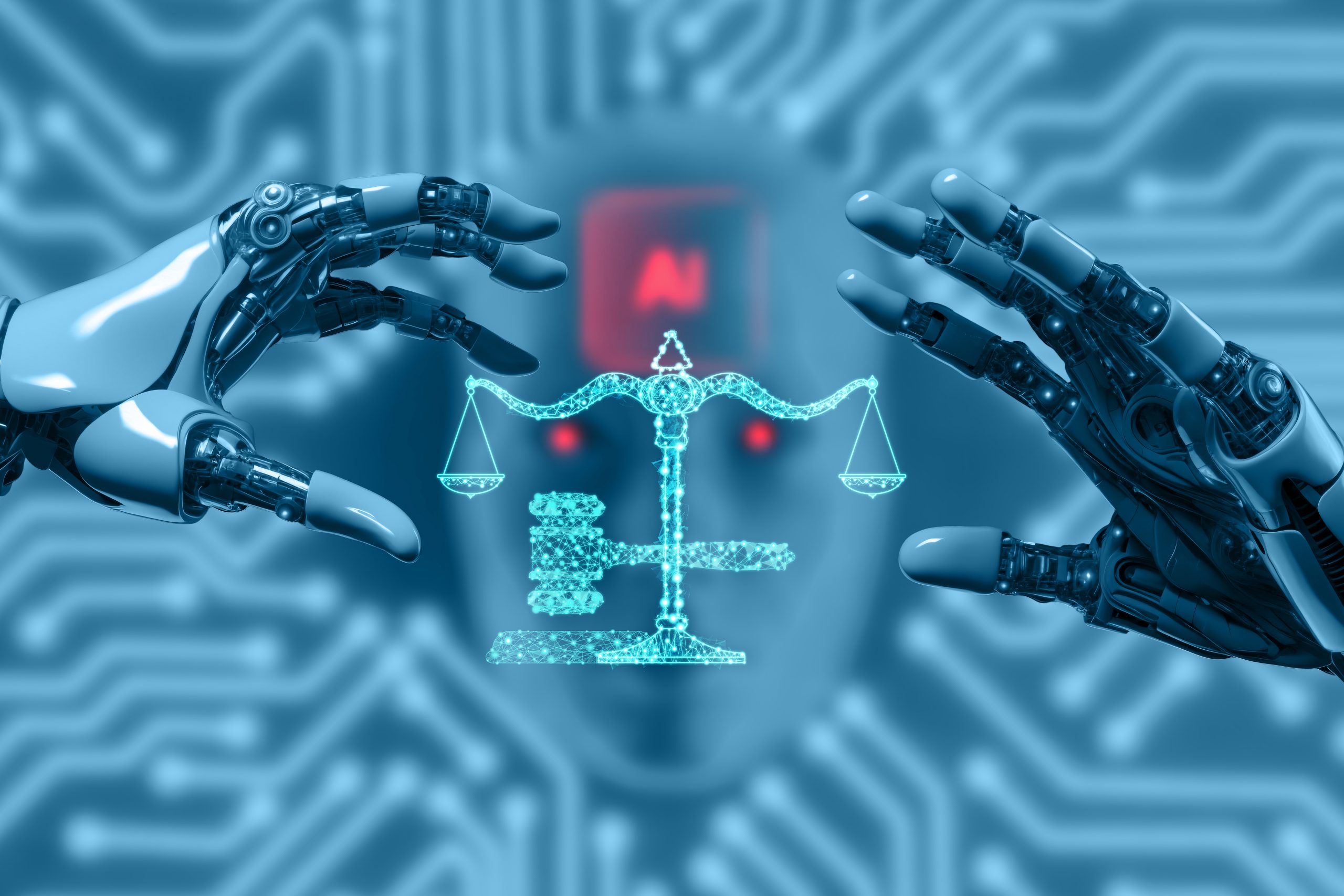
Artificial general intelligence (AGI) represents the pinnacle of artificial intelligence (AI) research, aiming to create machines with human-like cognitive abilities. Unlike AI systems designed for specific tasks, AGI is like a versatile Swiss army knife, capable of learning and adapting across a wide range of challenges.
The potential impact is immense, touching every aspect of our lives, from how we work to how we interact with technology. However, utilization isn’t a simple task. It involves navigating complex questions about the technology itself, ethics, consciousness, and the future of humanity’s relationship with intelligent machines.
In this guide, we’ll take a journey into the world of AGI, exploring what it is, how it works, and what it means for the future. This isn’t just for tech enthusiasts or academics. It’s for anyone who’s curious about what the future holds and wants to be prepared for it. It’s about arming ourselves with the insights and foresight needed to thrive in a world where AI is increasingly woven into the fabric of our daily lives.
So join us as we explore the world of AGI.
What is Artificial General Intelligence (AGI)?
First thing on our list is understanding AGI. And in order to do that, we must answer the most basic question, that is: What is AGI AI?
Going back to the analogy we used in the introduction, artificial general intelligence, or AGI for short, is like the Swiss army knife of artificial intelligence. Just as a Swiss army knife packs multiple tools into one handy device, AGI aims to imbue machines with a broad range of cognitive abilities, similar to those of humans. But what does that actually mean?
Let’s break it down. Most of the AI we encounter in our daily lives, like virtual assistants or recommendation systems, are examples of narrow AI. These systems are excellent at specific assignments, such as recognizing speech or playing chess, but they lack the versatility to perform a wide range of tasks.
AGI, on the other hand, aspires to be different. It’s not just about excelling at one thing; it’s about being a jack-of-all-trades when it comes to intelligence. Imagine a computer that can understand language, recognize objects, learn from its mistakes, and adapt to new situations—just like we humans do on a daily basis. That’s the goal.
But why is this technology such a big deal? Well, it opens up a world of possibilities. With AGI, we could have machines that help us solve complex problems across a variety of domains, from healthcare and finance to transportation and entertainment. Think of it as having a super-smart assistant who can tackle any challenge you throw at it.
Of course, achieving AGI is no small feat. It requires breakthroughs in fields like neuroscience, computer science, and psychology. Researchers are working hard to crack the code of human intelligence and translate it into algorithms and software in order to achieve some form of duplication.
But while it holds tremendous promise, it also raises important questions. How do we ensure these intelligent machines behave ethically? How do we prevent them from going rogue or causing harm? These are challenges that researchers and ethicists are grappling with as we inch closer to AGI. And we’ll tackle these risks and limitations at a later part of this guide.
In summary, Artificial General Intelligence is the holy grail of AI—a technology that promises to revolutionize the way we interact with machines and solve problems. While we’re not there yet, the journey is one filled with excitement, innovation, and the potential to change the world as we know it.
How Does it Differ from Artificial Intelligence (AI)?
Now that we have AGI explained, we’ll supplement that knowledge with a brief comparison between AGI and AI. This should really help you understand just how vast the technology is compared to the common AI systems that we know and use today.
We’ll be comparing AGI and AI in four different categories, namely scope, versatility, learning process, and autonomy.
Scope
AI: Also known as narrow AI, is designed to excel in specific tasks or domains, ranging from speech recognition and image classification to recommendation systems and autonomous driving.
AGI: On the other hand, AGI aims to replicate the broad range of cognitive abilities found in people. It seeks to go beyond specialized tasks and exhibit a level of versatility and adaptability comparable to human intelligence.
Versatility
AI: These are highly specialized and optimized for their intended tasks. For example, a facial recognition AI may perform exceptionally well at identifying faces but struggle with tasks outside its domain.
AGI: They are designed to be more flexible and general-purpose, capable of learning, reasoning, and adapting across various domains without the need for significant reprogramming or specialized training for each task.
Learning Process
AI: Learning typically occurs through supervised learning, where algorithms are trained on labeled and highly specific datasets. For instance, in training a spam filter, the algorithm is fed with examples of both spam and non-spam emails to learn the distinguishing features.
AGI: This requires more sophisticated learning mechanisms, including unsupervised learning and reinforcement learning. Unsupervised learning allows the system to discover patterns and structures in data without explicit guidance, while reinforcement learning enables the agent to learn through trial and error interactions with its environment.
Autonomy
AI: It operates based on predefined algorithms and rules that dictate how the system behaves and processes information, limiting its autonomy and adaptability.
AGI: The goal is to emulate the complex interplay of cognition, perception, and consciousness found in humans. It strives for autonomy, enabling the system to learn, reason, and make decisions independently based on its understanding of the world.
So while both AI and AGI share the goal of creating intelligent machines, they differ significantly in scope, versatility, learning processes, and autonomy. AGI represents a paradigm shift towards more human-like intelligence, offering the potential for machines to think, learn, and adapt across a wide range of tasks and domains.
The Potential Impact of AGI on Industries
If it weren’t obvious by now, AGI is poised to revolutionize numerous industries and sectors, ushering in a new era of innovation and efficiency, and here are some examples how that could potentially happen:
Healthcare
AGI can optimize patient care through personalized medicine, accelerate drug discovery processes, and improve diagnostic accuracy. By analyzing vast amounts of medical data, it can assist healthcare professionals in making data-driven decisions, leading to better treatment outcomes and reduced healthcare costs.
Finance
In the financial sector, it has the potential to enhance investment strategies, detect fraud, and improve risk management. AGI-powered algorithms can analyze market trends in real-time, make informed investment decisions, and mitigate financial risks for better profitability and stability in financial markets.
Transportation
AGI can revolutionize transportation by enabling the development of autonomous vehicles, optimizing traffic flow, and enhancing logistics operations. Systems can navigate complex environments safely, reducing accidents and congestion, while boosting efficiency and sustainability in transportation networks.

Education
AGI has the capability to personalize learning experiences, adapt curriculum to individual student needs, and provide targeted support to learners. By analyzing student data and learning patterns, it can tailor educational content and interventions, hopefully improving student engagement and academic performance.
Entertainment
In the entertainment industry, AGI can enhance content creation, gaming experiences, and virtual reality applications. It can generate realistic graphics, create immersive storytelling experiences, and customize gameplay based on user preferences and craft more engaging and immersive entertainment experiences.
Research and Development
AGI can accelerate scientific research and innovation by automating experiments, analyzing complex datasets, and generating novel hypotheses. It can assist researchers in exploring new frontiers in fields such as physics, chemistry, and biology, which could eventually lead to breakthrough discoveries and advancements.
Economic and Societal Impact
The widespread adoption of AGI can stimulate economic growth by creating new job opportunities and driving productivity gains across various sectors. It could create new markets, enhance global competitiveness, and essentially, improve standards of living and societal well-being.
AGI offers a multitude of applications across diverse domains, promising to improve efficiency, enhance decision-making, and unlock new opportunities for growth and success. By harnessing the power of AGI responsibly, we can realize its full potential to transform society and improve the quality of life for people around the world.
5 Limitations and Risks of AGI
While AGI holds tremendous promise, it also comes with inherent limitations and risks that must be carefully considered.
These limitations stem from the complexity and unpredictability of achieving human-level intelligence in machines, as well as the potential societal and ethical implications of deploying this powerful technology at scale.
1. State of Development
Achieving true AGI remains an elusive goal despite significant progress in AI research. Current AI systems lack the breadth and depth of human intelligence, often excelling in narrow, specific tasks but falling short in complex and ambiguous situations.
2. Resource Intensiveness
The computational resources required to train and deploy AGI systems are immense. This includes vast amounts of computational power, energy, and data, posing practical challenges in scalability, affordability, and environmental sustainability.
3. Safety and Control
As AGI systems become more autonomous and capable, there is a risk of unintended consequences and potential misuse. They may exhibit unpredictable behaviors, make erroneous decisions, or pose safety risks if not properly designed, monitored, and regulated.

4. Ethical and Societal Challenges
AGI introduces ethical and societal concerns, including job displacement, economic inequality, privacy issues, and biases in decision-making processes. Addressing these challenges requires careful consideration and proactive measures to ensure that AGI benefits society as a whole.
5. Existential Questions
AGI raises existential questions about the future of humanity in a world where machines possess human-like intelligence. Speculation about AGI surpassing human intelligence and posing existential risks has sparked debates among experts and policymakers about the ethical and philosophical implications of creating intelligent machines.
By understanding the challenges and shortcomings of AGI development, we can set realistic expectations and use our resources wisely. It also allows us to take proactive steps to minimize harm and ensure AGI is used responsibly. By being mindful of these limitations and risks, we can ensure that we use the technology to its full potential while avoiding unintended problems.
The Future of AGI
So, what does this all mean for us?
The future of AGI is a topic of great anticipation and speculation. While achieving AGI remains a challenging task, recent advancements in AI research have brought us closer to this goal than ever before.
Experts in the field predict that AGI could become a reality within the next few decades, although the exact timeline is subject to debate. As researchers continue to push the boundaries of AI technology, we can expect to see continued progress in areas such as machine learning, natural language processing, and robotics, laying the groundwork for AGI development.
If you’re skeptical about all this, that’s fine. It’s natural to feel that way about AGI, particularly concerns about its potential to replace human workers. However, it’s essential to approach this topic with nuance and consider the broader context. While AGI has the potential to automate certain tasks, it’s unlikely to completely replace the human workforce. Instead, the future role of AGI or AI in business is more likely to augment human capabilities, freeing individuals from repetitive or mundane tasks and enabling them to focus on more creative, strategic, and high-level activities.
Additionally, AGI has the potential to create new job opportunities and fields, leading to shifts in the labor market rather than widespread unemployment. By embracing a balanced perspective and exploring the potential benefits and challenges of AGI, we can foster a more informed and constructive dialogue about its role in shaping the future of work and society.
Being open-minded about these kinds of technology and innovation is crucial. We should embrace new ideas and perspectives to allow us to explore the full potential of AGI while also acknowledging the ethical, societal, and technical challenges it presents.
As we navigate its complexities, maintaining an open mind will be essential for driving innovation, promoting responsible AI development, and ensuring that AGI ultimately serves the greater good.
Embracing Artificial General Intelligence (AGI)
The journey into the world of artificial general intelligence (AGI) is one filled with excitement, uncertainty, and boundless potential. As we’ve explored its intricacies—from its fundamental concepts to its applications and implications—it’s evident that AGI represents a profound technological advancement that has the power to reshape businesses, transform societies, and redefine the very essence of what it means to be human.
However, amidst the anticipation and speculation, it’s essential to approach this technology with caution, foresight, and an open mind. While it holds tremendous promise, it also presents significant challenges and risks that must be carefully managed.
By fostering interdisciplinary collaboration, robust governance frameworks, and ongoing dialogue among stakeholders, we can navigate the complexities of AGI development responsibly and ensure that it is deployed in a way that maximizes its benefits for humanity while mitigating potential harms–in a way that empowers individuals, enriches lives, and advances human civilization to new heights.







